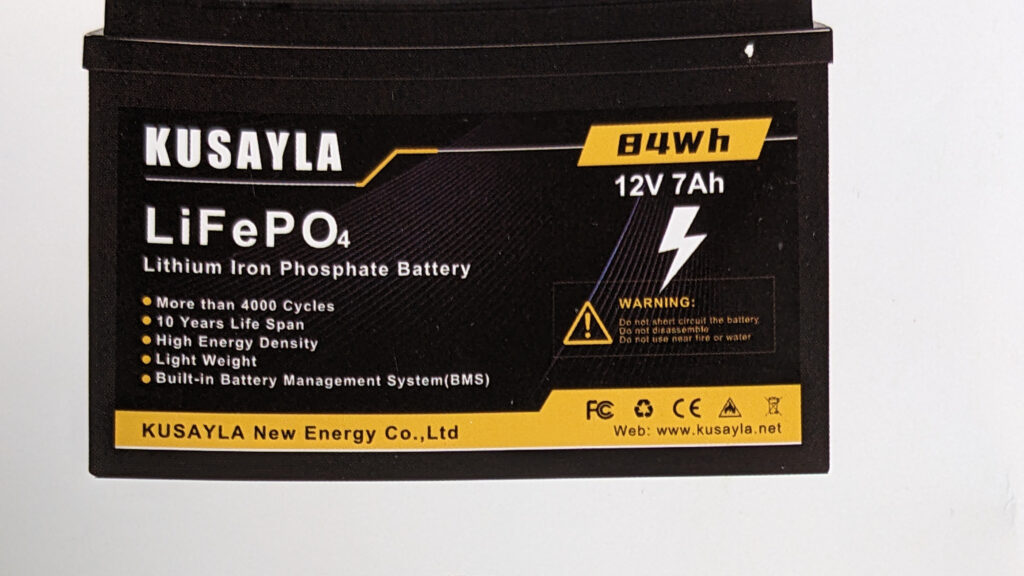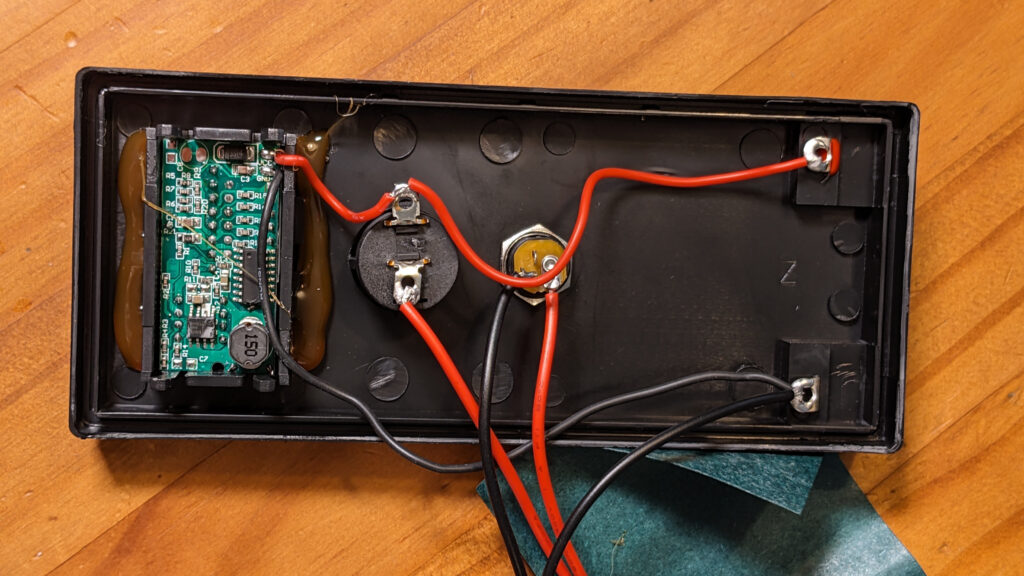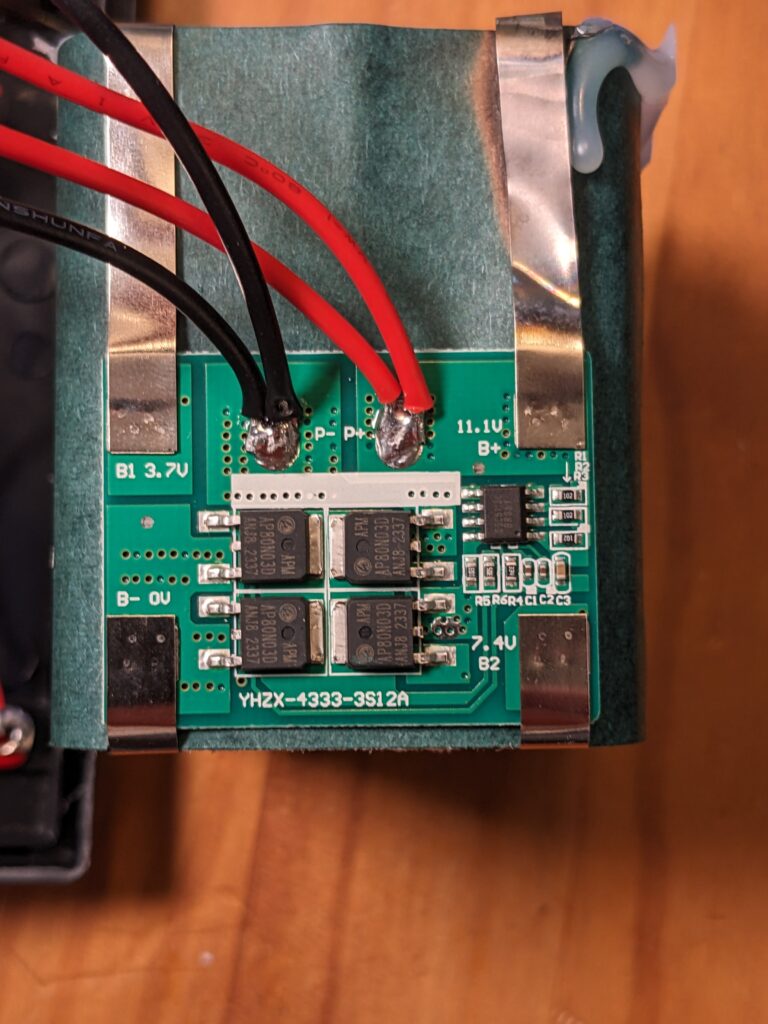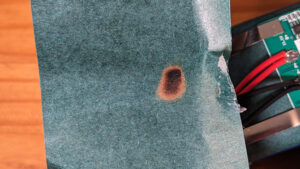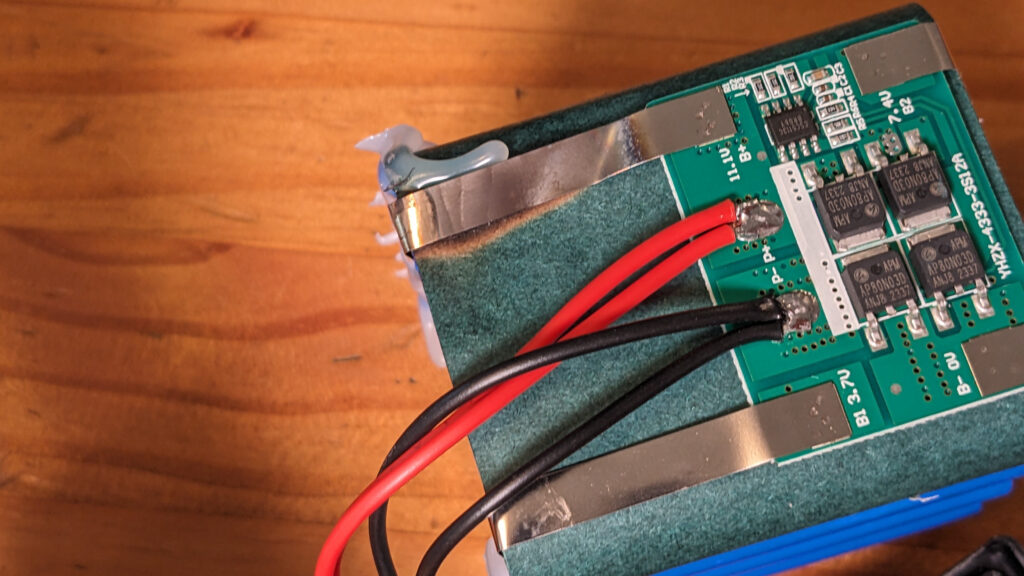KUSAYYLA 12v 7 5Ah LiFePO4 replacement battery (Possible fire hazard)
This “drop in” replacement for a 12v AGM battery has 12x 18650 cells in a 3 series 4 parallel configuration. The cells only had a company logo on them, and no other markings, so they *could* be LiFePO4 chemistry, but I can’t verify that one way or the other.
It is able to provide 7.4 Amp Hours when discharged at 6 amps. It comes with a 3 amp LiIon battery charger that will re-charge it fully in 4.5 hours, using about 100 watts to do so (the battery is rated at 84 Wh, so the charger loses some power to inefficiencies). It also appears that a standard Lead Acid battery charger will charge the battery successfully. I noticed that the BMS would disconnect the terminals when my lead acid battery “smart” charger thought that the battery was about 50% charged (when the cell voltages got too high). The BMS would then re-connect the terminals to the internal cells about 30 seconds later, and the “smart” 12v lead acid battery charger would start to charge it up again, until the cycle repeated. So the BMS does appear to protect the cells from over-voltage charging.
The specifications say you can draw 30 amps for a maximum of 5 seconds. When I tried to do this, the battery was only able to provide 25 amps and the voltage sagged quite a bit (The BMS didn’t shut things down). I could draw 20 amps for at least 20 seconds, and it appeared that I could draw 15 amps for a longer period of time (I stopped after about a minute). However, the specifications also say you should limit your current draw to 6A continuous. After testing higher current draws, I smelled a “cooking marshmallow” smell, and when I opened up the battery I found evidence that one of the nickle battery bus bars had overheated (it was discolored from heat, and the protective green paper under and on top of it had turned brown). So I do not believe that the BMS current limit is set appropriately for the size of the nickel terminal connecting the BMS to the cells.The battery still works, and I didn’t observe any damage to the cells, but I was definitely able to draw too much current too quickly and overheated the nickle terminal (I suspect it was glowing red at the time to discolor the metal that much).
So, don’t use this in an application where more than 6 amps can be drawn out of it. And perhaps don’t use it in unattended applications, as I’m not convinced of the safety engineering behind the battery.
